Elf Ahearn
Regency romance with a Gothic twist.
Rogue triva
Lots of tidbits in A Rogue in Sheep's Clothing come from my life. Here are just a few.
Snowman the Legend vs. Manifesto the Fiction
A Rogue in Sheep’s Clothing features a dabble-gray stallion named Manifesto, and he was inspired by Snowman, a horse I worshipped as an equine-crazed tween.
In 1956 Snowman was a plow horse in Pennsylvania’s Amish country, and his eventual owner, Harry E. de Leyer was the owner of a riding school on Long Island. For whatever reason, Snowman’s Amish master put the white and speckled horse up for auction. As is still the case at these events, any animal not sold by the time the gavel makes its final knock, is loaded into a truck and hauled off to the slaughterhouse.
Harry, hoping to buy a few cheap school horses, was late to the auction, but in time to watch eight-year-old Snowman take his final steps up the truck’s ramp.
Now when I was a kid, I could swear I read this, but I have no proof it’s true; when Harry spied Snowman in the livestock trailer, he saw “a look of eagles” in the horse’s eyes. “A look of eagles;” I love that. So Harry motioned to the driver to lead Snowman back out, and he handed the guy $80 for his troubles.
A few months passed, and Harry used Snowman as a school horse, but being a shrewd business man, sold the animal to a neighbor for twice what he paid. Snowman would have none of it, though. Upon being turned out in the neighbor’s paddock, Snowman popped the five-foot fence between the two properties and galloped back to Harry. The humans tried again, but the $80 plow horse thwarted their efforts by leaping every obstacle they put in front of him. The eagle would not land.
Recognizing Snowman’s extraordinary ability, Harry bought him back. Two years later his $80 investment won so many shows, he was named the U.S. Equestrian Federation’s Horse of the Year, the Professional Horseman’s champion, and the champion of Madison Square Garden’s Diamond Jubilee. In 1959, Snowman became the first horse to win the Open Jumper Championship at Madison Square Garden two years in a row.
Snowman was dubbed the “Cinderella horse,” and LIFE magazine called his reversal of fortune a “nags to riches” story. In addition, a book was written about him titled “The Eighty-Dollar Champion,” and there’s even a documentary called “Harry & Snowman.”
Manifesto, the stallion in A Rogue in Sheep’s Clothing, shares Snowman’s color and jumping ability, but my fictional horse is so spirited only Ellie can ride him. Snowman, however, was so gentle there’s a famous picture of Harry’s six kids riding him bareback. Even Johnny Carson once mounted him on national TV. But like Snowman, Manifesto is a champion, and Ellie, like Henry, considers her horse her best friend. And last, but most important, both horses share that look of eagles.
Fairland: My Home Sweet Home
The idea for A Rogue in Sheep’s Clothing came directly from my family. There are four sisters in the book, and there are four girls in my family. Lord Albright, the heroine’s father, is an Egyptologist; my father was an Egyptologist; the Albrights live on an estate called Fairland, and yes, I grew up on an estate called Fairland.
My Fairland was a nineteen-room house (not including bathrooms) on eighteen sweeping acres. Every room in that massive abode was packed with books. By the time he died, my father had amassed 27,000 volumes. He built a children’s library with a tiny reading balcony, a chapel room where he housed the works of the great philosophers, and a main library that sported a magnificent fireplace and a set of gold drapes acquired from Teddy Roosevelt’s office at the American Museum of Natural History. Fairland was an extraordinary place to live, and I am the luckiest person I’ve ever met.
Like all incredible places, however, there was something not quite credible about Fairland. The fact is, we couldn’t really afford to live there. When I say my father “built” the children’s library, I mean he really did build it. The only help he got was from my uncle, my mother, and me (I passed the nails).
In winter we heated only the back of the house by running a wood burning stove in the kitchen. There were so many dogs and cats piled around that stove you had to have a gymnast’s balance to load more logs. My parents, who slept in the master suite at the front, could see their breath when they went to bed. They snuggled under an electric blanket and kept a space heater going in the bathroom for quick dashes at night. Among other issues, the brass handle on the front door didn’t work, so we opened it by yanking on a rope, and we never wore anything but secondhand clothes. My father’s favorite jacket was a torn polyester parka he patched with duct tape.
Fairland was in an immensely wealthy part of Connecticut populated by the bastions of conservatism; William F. Buckley owned the house across the street, literally. But my parents were artists—dreamers who didn’t quite fit the Connecticut mold. There was something almost feral about us, and those were qualities that were often met with either curiosity or contempt. My sisters and I tried often and hard to fit in, but our hand-me-downs, our lack of funds, and a restless inability to conform always kept us skirting the outside of the inner circles.
That tippy social balance was what I wanted to achieve in A Rogue in Sheep’s Clothing. Ellie longs for social acceptance, but having grown up a wild thing, she finds it too constricting. She is forever on a tightrope between getting what she wants and social ruin. That was me then, and though the edges have been smoothed, I’m still the tame-less artist darting through the social jungle.
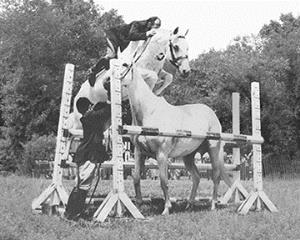 Snowman jumps a horse.
Snowman jumps a horse.
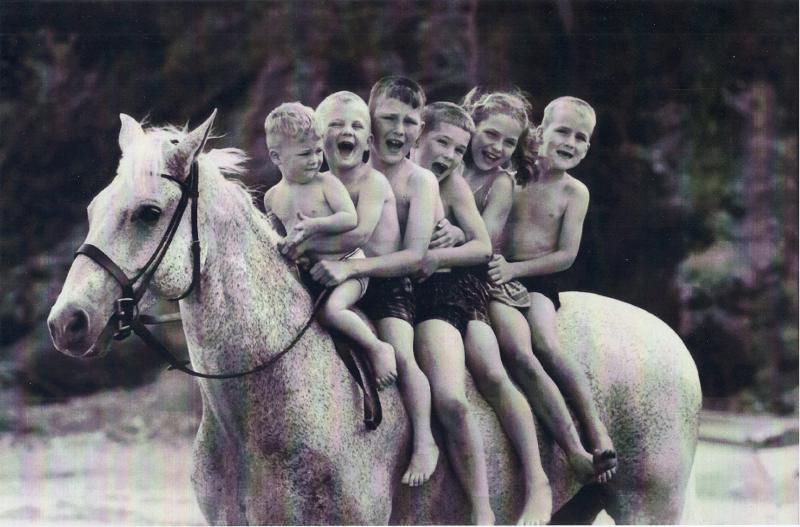
Always gentle, Snowman plays host to Harry's six kids.
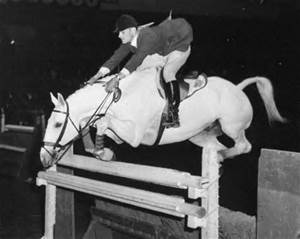 Look at that horse tuck!
Look at that horse tuck!
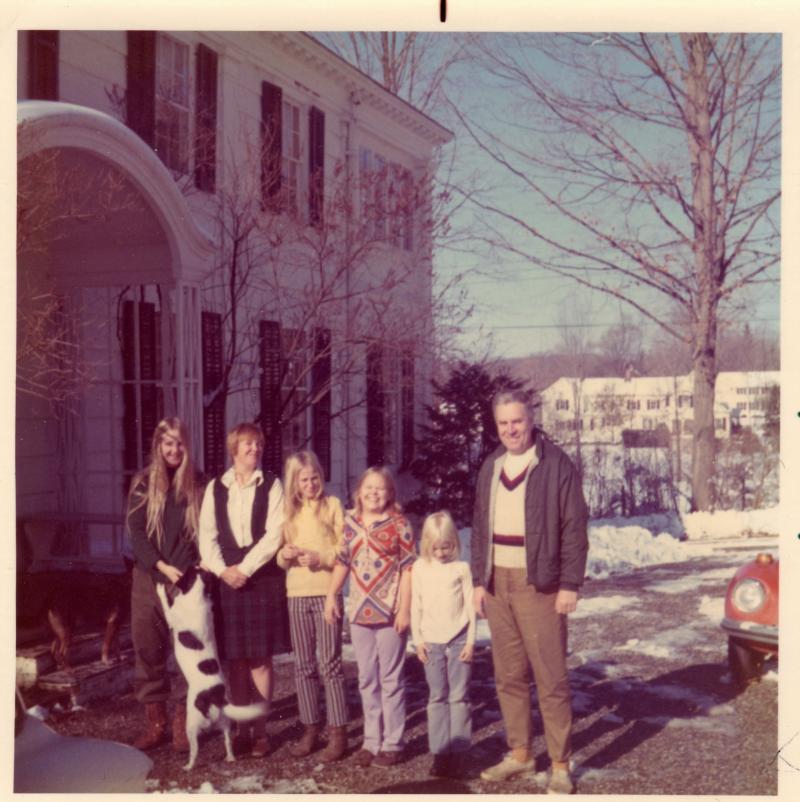 It's difficult to see, but my father's pants are too short and there's a Volkeswagon in the background.
It's difficult to see, but my father's pants are too short and there's a Volkeswagon in the background.
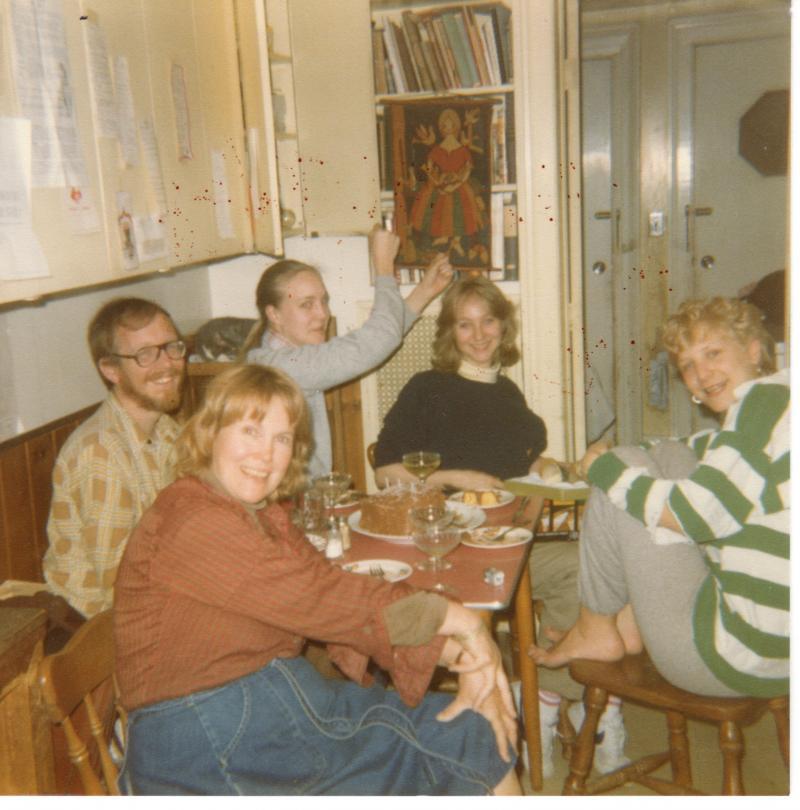 That was our kitchen table. See what I mean? It's totally not CT upper crust furniture.
That was our kitchen table. See what I mean? It's totally not CT upper crust furniture.
opyright 2011 Writer/Editor Elf Ahearn. All rights reserved.